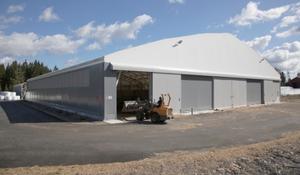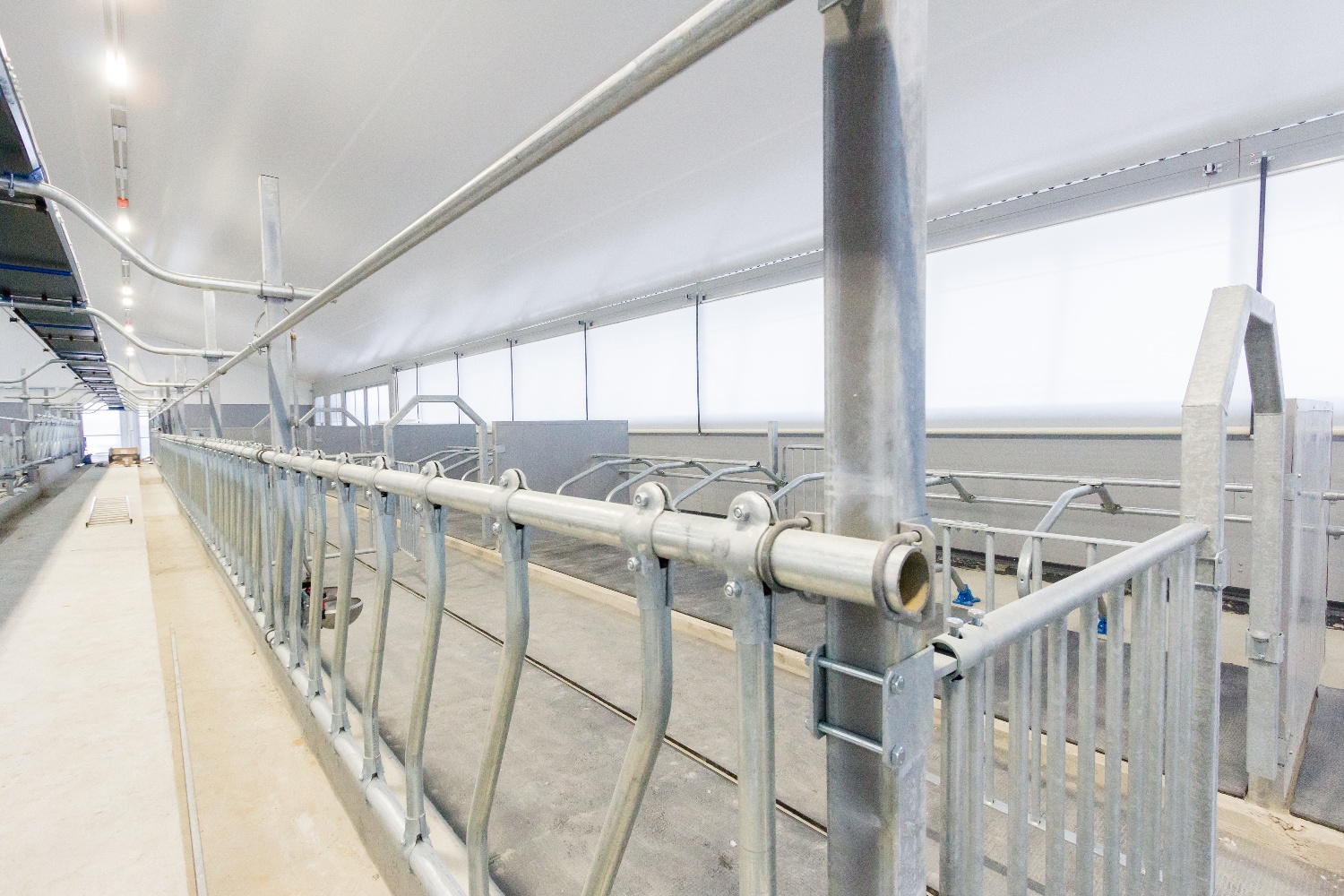Fabric structures are safe and long-lasting solutions for agriculture

In Finland, the cost of building a cow barn is higher than in other EU countries. A steel-framed Best-Hall building is also a good and cost-effective option for various agricultural construction needs.
I am familiar with the everyday life of farmers from my other role as the spouse of a dairy farmer and a cook for fodder harvesters. Many people have questions about construction, especially about the cost and safety of various cow barns and other agricultural buildings.
Our agricultural clients have found our fabric structure to be a good investment. In this blog, I have compiled answers to the most frequently asked questions.
The building can be as big as you want
The width of a Best-Hall building can be chosen freely between 12 and 100 metres. There are no limits on the length – you can tailor the building to your needs. The most cost-effective option is to choose a length that is divisible by three.
The building can be split into sections
In principle, Best-Hall buildings are completely pillar-free, which means that the building’s functions can be designed without any restrictions. By using partition walls, a Best-Hall building can be easily divided into different sections, according to criteria such as the age of the cattle or the functions needed in the building.
Good ventilation
A fabric-covered building is ventilated by means of natural air circulation, so it breathes freely. The walls of the building can be made entirely or partly of mesh fabric. In addition to this, the building’s roof is fitted with either ventilation valves or a ventilation opening with a durable mesh fabric along the entire length of the roof ridge. The mesh also prevents birds from entering the building. Mechanical ventilation also consumes electricity and produces noise in the barn, while natural air circulation does not.
A bright and quiet building
Best-Hall buildings stand out from other agricultural buildings because of their brightness. The conditions are as natural as possible, thanks to the natural light that shines through the cladding. There are several cladding options. For example, the standard white cover fabric lets about 7% of light through, while the light grey and white translucent special fabrics let 11% and 20% of light through respectively. The animals are grateful for the sunlight, and thanks to the translucent cover, a Best-Hall building with a single cover layer requires no extra lighting even on cloudy days. The fabric cover also absorbs sound and therefore creates a calming environment for the animals.
Safe structure
As the leader in quality for steel-framed buildings, Best-Hall was among the first to receive the European CE marking for its load-bearing structures and sliding doors. Each building is built according to strength calculations and local snow and wind loads to meet the requirements of the location and environment. Quality is also ensured by the fact that the company handles the production chain fully from design to installation. A fabric-covered building is also a safe choice in the event of a fire, because the roof will melt and let the gases directly out, meaning that there is no risk of the roof collapsing. This is why it is also a safer option for the animals.

Can even be built in winter
A steel-framed building can also be installed in winter. Once the Best-Hall building is standing, the interior can be finished without exposure to the elements. Off-season winter construction is also often faster and more affordable. If the asphalt or concrete foundation is already in place, a steel-framed building can also be installed in winter.
Long-term, subsidised investment
The steel frame of a Best-Hall building has a service life of more than 50 years and the cladding has an average service life of 30 years. The cladding can be renewed when necessary. Best-Hall promises a minimum warranty period of 10 years for the cladding. The building investment is also eligible for an agricultural construction investment subsidy from the Centre for Economic Development, Transport and the Environment.
Finnish agricultural building
Best-Hall buildings are manufactured at a factory in Kälviä, Finland. The domesticity rate of the buildings is up to 90% – for example, the steel frames are mainly made of Finnish steel.
The building can be either cold or cool
Fabric-covered buildings can be divided into cold and cool shelters.
A cold shelter is uninsulated and equipped with a single layer of cladding. The indoor temperature of a cold fabric-covered shelter can be up to ten degrees warmer than the outside air in winter. For beef cattle, a cold shelter is a common option, as cattle are comfortable even in temperatures below zero, provided that they have shelter from the wind and rain and a dry place to lie down. On dairy farms, a cold shelter is suitable for heifers and dry cows.
Cool shelters have become more common in Finland since the early 2000s. A cool shelter is insulated to keep the temperature above zero all year round. For example, this can be achieved by insulating only the roof and end walls and replacing the side walls with either curtain walls or window walls made of mesh material. The advantages of cool shelters are excellent ventilation and the fact that they stay cooler than traditional buildings in hot weather. So the heat insulation and temperature management can be designed to meet the requirements of the livestock and milking systems.
Read more about our agricultural buildings here.
